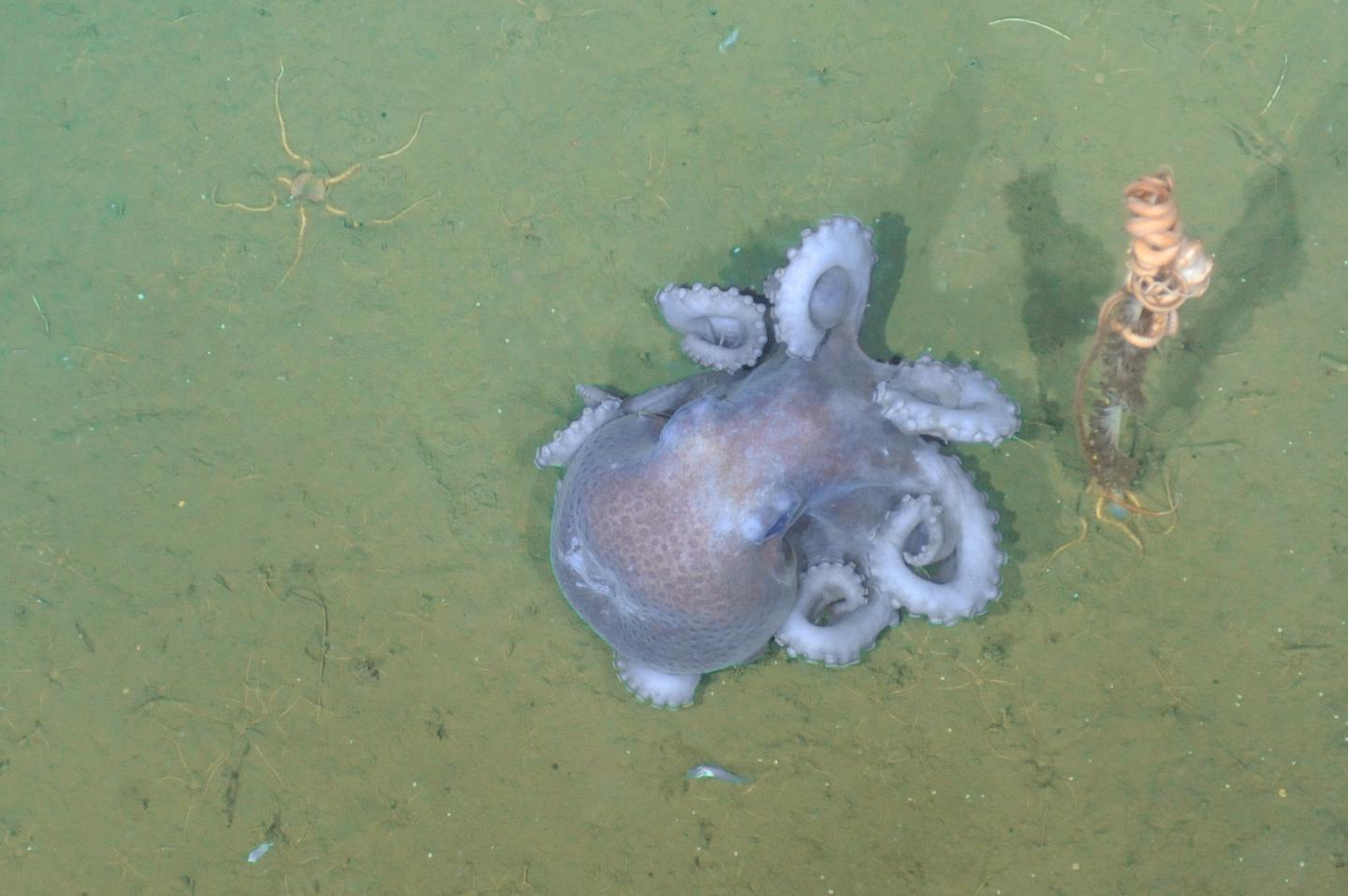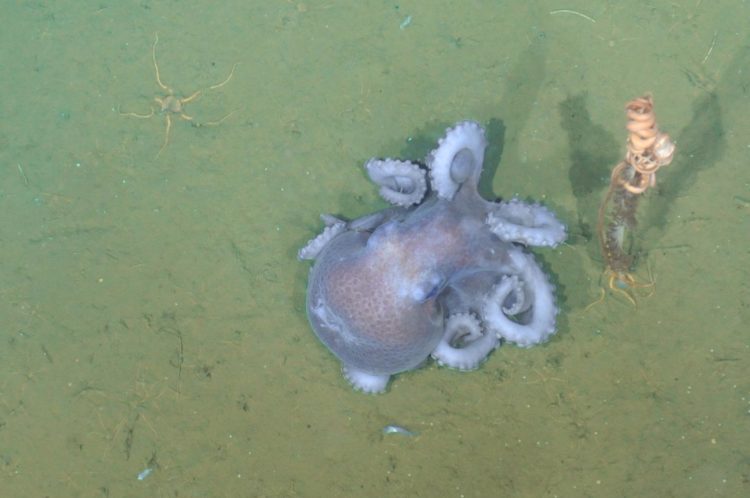
Credit: Ocean Networks Canada/ CSSF-ROPOS
Deep beneath the ocean’s surface, surprisingly cute warty pink octopuses creep along the seafloor. But not all these octopuses look alike. While we humans love a good “Is your skin oily, dry, or combination?” quiz, members of one octopus species take variations in skin texture to a whole new level. Some have outrageous warts, while others appear nearly smooth-skinned. Scientists weren’t sure if these octopuses were even members of the same species, and they didn’t know how to explain the differences in the animals’ looks. But in a new study, scientists cracked the case: the deeper in the ocean the octopuses live, the bumpier their skin and the smaller their bodies. DNA revealed even though the octopuses looked different, they were the same species.
“If I had only two of these animals that looked very different, I would say, ‘Well, they’re different species, for sure.’ But variation inside animal species can sometimes fool you,” says Janet Voight, associate curator of zoology at the Field Museum and the lead author of the paper in the Bulletin of Marine Science. “That’s why we need to look at multiple specimens of species to see, does that first reaction based on two specimens make sense?”
To figure out if the smooth and warty octopuses were the same species, the scientists examined 50 specimens that were classified as Graneledone pacifica— the Pacific warty octopus. Plunging deep into the ocean in ALVIN, a human-occupied submersible vehicle, Voight collected some of the octopuses from the Northeast Pacific Ocean. The team also studied specimens loaned from the University of Miami Marine Laboratory and the California Academy of Sciences. They looked at specimens from up and down the Pacific, from as far north as Washington State to as far south as Monterey, California, and from depths ranging from 3,660 feet to more than 9,000 feet below the ocean’s surface.
The researchers counted the number of warts in a line across each octopus’s back and its head and the number of suckers on their arms. They found that the octopuses from deeper in the ocean looked different from their shallower counterparts. The deep-sea specimens were smaller, with fewer arm suckers, and, most noticeably, bumpier skin than those from shallower depths. The thing is, there weren’t two distinct groups; the animals’ appearances changed according to how deep they live. Comparing the octopuses’ DNA sequences revealed only minor differences, supporting the idea that they were all the same species, despite looking so different.
Sometimes when animals look different from each other, scientists can be tempted to jump the gun and declare them separate species– especially in the deep sea, where very little is known about animal life and scientists often don’t have many specimens to compare. But looking different doesn’t necessarily mean that animals are members of different species; take chihuahuas and Great Danes, which are both the same species of Canis lupus familiaris.Dogs’ different appearances are due to selective breeding by humans, but in the case of the warty octopuses in this study, their different appearances seem to result from environmental influences, because their appearance changes depending on where the octopuses are from.
Scientists aren’t sure why the variations in skin texture occur with depth. But they do have a hunch about the size difference.
Voight thinks that these octopuses usually eat creatures from the sediment on the ocean floor, passing food from sucker to sucker and then crushing their prey like popcorn. “There’s less food as you get deeper in the ocean. So these animals have to work harder to find food to eat. And that means at the end of their lives, they’ll be smaller than animals who have more food. If you’re a female who’s going to lay eggs at the end of your life, maybe your eggs will be smaller” says Voight. Smaller eggs mean smaller hatchlings.
Support for this hypothesis comes from the number of suckers on the males’ arm that transfers sperm packets to females. Earlier research by Voight found that male hatchlings have a full-formed arm with all its suckers in place. The researchers documented that the number of suckers on this arm was way smaller in males from greater depth, and Voight hypothesizes it relates to egg size.
“The octopus hatchlings in shallower water, only 3,660 feet, are bigger. Their eggs had more yolk. As the embryos grew, they developed farther inside the egg than the ones from 9,000 feet, who were developing in smaller eggs. They had less energy to fuel their growth before they left the egg, so they made fewer suckers,” says Voight. Seeing these physical manifestations of octopuses’ food limitation provides a hint of how they might fare as climate change progresses and the octopuses’ food supply fluctuates.
Voight notes that this study, which shows that different-looking octopuses can still be the same genetic species, could help researchers down the line trying to identify life forms in the deep sea. Remotely operated vehicles collect video footage of the ocean floor, and it can be used to estimate the number of species present – if we know what they look like. That’s why, Voight says, it’s so important to examine specimens in person and use characteristics you can’t see on video to identify species boundaries.
“There’s still just so much we don’t know about the deep sea. We need to be able to understand the information that’s becoming available from ROV footage. And we can only do it by knowing what the animals look like.”
###
Media Contact
Adeyinka Ladapo
[email protected]
312-665-7100
Related Journal Article
http://dx.





